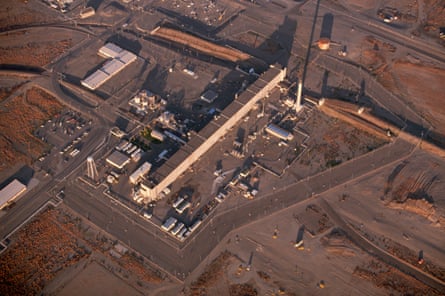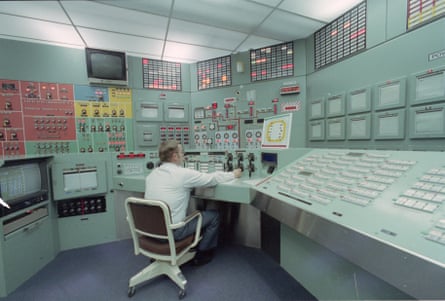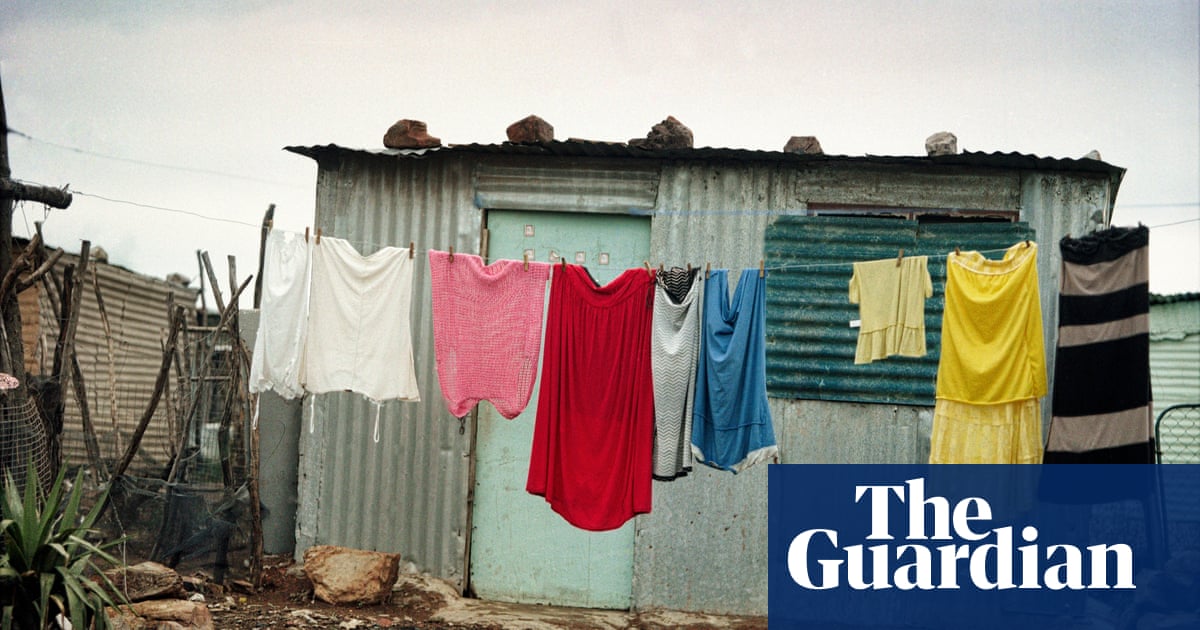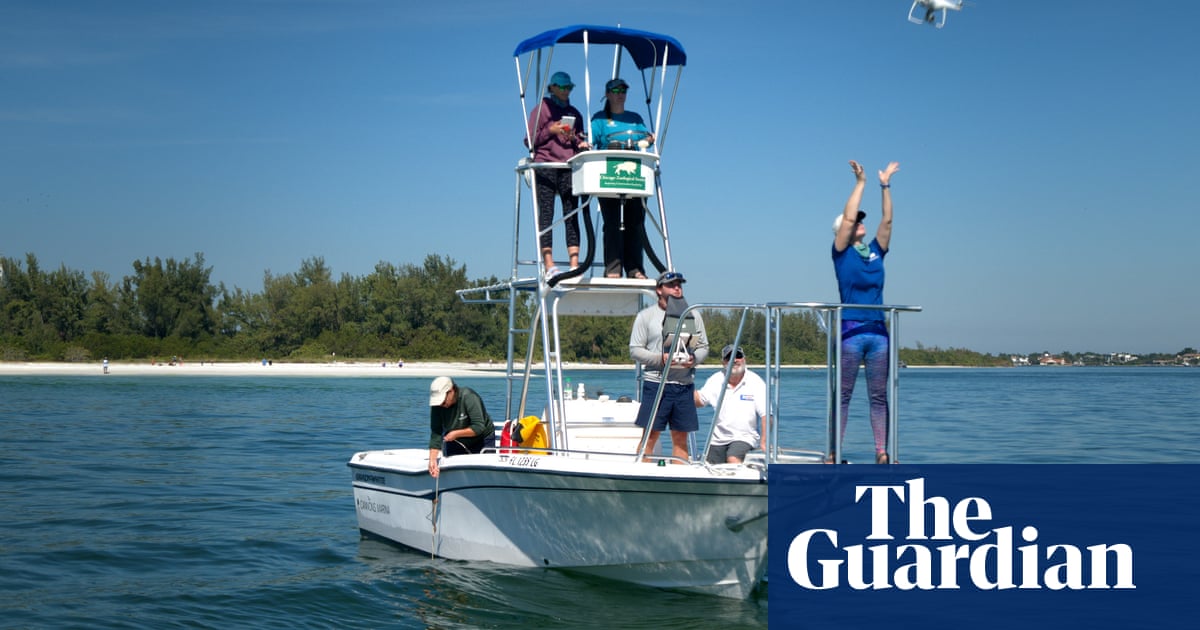In the bustling rural city of Richland, in south-eastern Washington, the signs of a nuclear past are all around.
A small museum explains its role in the Manhattan Project and its “singular mission – [to] develop the world’s first atomic bomb before the enemy might do the same”. The city’s high school sports team is still known as the Bombers, with a logo that consists of the letter R set with a mushroom cloud.
Richland lies just 30 miles from the Hanford nuclear site, a sprawling plant that produced the plutonium for America’s atomic weapons during the second world war – and later the bomb dropped over Nagasaki. Over the decades, thousands of people in the Tri-Cities area of southern Washington worked at the plant, which shuttered in 1989.
But a dark legacy of Hanford still lingers here: vast amounts of highly radioactive waste nobody is quite sure what to do with.

Residents have long spearheaded an operation to deal with 56m gallons of nuclear waste left behind in dozens of underground tanks – a cleanup that is expected to cost half a trillion dollars and may not be completed until 2100. The government has called it “one of the largest and most expensive environmental cleanup projects worldwide”.
In recent weeks, what has already been a costly and painstakingly slow process has come under renewed scrutiny, following an exodus of experts from the Department of Energy (DoE) that is overseeing the cleanup being executed by thousands of contract workers.
According to local media, several dozen staff, who reportedly include managers, scientists and safety experts, have taken early retirement or been fired as part of a broader government reduction overseen by Elon Musk and his “department of government efficiency”. The government has refused to provide a specific figure for how many people involved with cleanup efforts have left. The top DoE manager at the Hanford site, Brian Vance, who had many years of experience, resigned at the end of March without giving a reason.
The changes have thrown the communities around the Hanford plant into limbo. And while the Department of Energy has said that only six staff have been fired, and reiterated its commitment to the cleanup, that hasn’t managed to assuage locals’ concerns.
Those raising the alarm include politicians from both parties, environmental activists, and Indigenous communities who have historically owned the land on which the 560 sq mile (1,450 sq km) site sits.
The US senator for Washington Patty Murray said workers were already understaffed, and that cutting further positions was “reckless”.
“There is nothing ‘efficient’ about indiscriminately firing thousands upon thousands of workers in red and blue states whose work is badly needed,” the Democrat said.
Dan Newhouse, the local Republican congressman is similarly concerned. “A strong, well trained federal workforce is essential,” he wrote in a weekly newsletter to constituents.
Concerns have also been raised by some over the difficulty former workers face in making medical compensation claims to the government for everything from cancer to acute pulmonary disease linked to their time at the plant.
Taken together, there is fresh anxiety in a community, where many are still living with the health and environmental effects of Hanford.
Richland, part of the Tri-Cities, was obtained by the army in 1943 to house workers engaged in top-secret efforts to produce plutonium used in the world’s first nuclear explosion – the-so-called “Trinity” device tested near Los Alamos, New Mexico, in 1945. Though the city was returned to the public a decade later, it can still feel like a company town.
To get anywhere near what is known as Hanford’s B-reactor, the world’s first full-scale plutonium production reactor, you need to sign up for an official tour. Yet a view of its grey, single tower, looming from the hillside, can be seen from state route 24, close to the Columbia River.
Those expressing concern about the federal government downsizing include local Indigenous groups who historically owned the land where the site is located and were pushed off it by the government. The Hanford plant area contains the location of several sacred sites, among them Gable Mountain, which were used for ceremonies, and the area of Rattlesnake Mountain, or Lalíik, which has for centuries been used to hunt elk.
The site is also located close to the Yakama Indian Reservation, home to 11,000 people, and the tribe has long pushed to be central to decisions about the cleanup and what it is eventually used for. The tribe recently signed a deal to carry out their first elk hunt in the area for seven decades.
“One of the biggest fears is that without proper manpower, there might not be a very good crew for the cleanup of the property,” says Gerald Lewis, chairman of the Confederated Tribes and Bands of the Yakama Nation. “Without this cleanup, that’s been happening for a number of years, we’re afraid of a nuclear mishap.”
Dr Elizabeth McClure, a health data specialist with the Union of Concerned Scientists, is currently conducting research in the communities around Hanford. She says there is a history of government-led cover-ups over the years at the site, including what is known as “the Green Run”, the intentional release of 8,000 so-called curies of iodine-1 into the atmosphere in 1949.
By comparison, the leak of radioactive material at the Three Mile Island accident in 1979 involved just a dozen. The Green Run was only acknowledged by the government in 1986. It later emerged that so-called “downwinders”, suffered higher rates of cancer and harm to their lymphatic system.
She says Indigenous communities, and other marginalised groups, are often not included in research into the broader impact of places such as Hanford.
“In public health, we’re doing work to improve the wellbeing of the public,” she says. “If you aren’t getting the insights and feedback of who’s being harmed, you’re not going to be able to make improvements.”
Also monitoring developments is Hanford Challenge, an environmental group that has highlighted – among other issues – the estimated million gallons of radioactive waste already leaked into the soil because several dozen storage tanks are cracked.
A plan to send 2,000 gallons of waste for treatment in Utah or Texas was put on hold after protests from communities on the route, including the city of Spokane and the Umatilla Indian Reservation. Nikolas Peterson, a spokesperson for Hanford Challenge, is concerned about job losses and how it will impact a cleanup operation that is taking place far away from the public eye.
“This level of reduction in staffing raises serious concerns about oversight, accountability and continuity. While the contractor workforce performs the bulk of the cleanup work, DoE staff play a critical role in setting priorities, ensuring compliance and maintaining transparency with the public,” he said.
after newsletter promotion
“A diminished federal presence could slow decision-making, weaken oversight and reduce opportunities for meaningful engagement with stakeholders.”
For former plant workers like Larry White, the legacy of Hanford is complex.
White says he loved the camaraderie of the job, sucked up the hour-long commute, and didn’t grumble when he was required to put on protective gear that made the temperature soar.

But the job left him with lingering scars. White developed skin cancer and a progressive lung disease that has made it painful to breathe. Even now, as the 83-year-old makes out medical compensation claims, he is not one to complain, even though it hurts to breathe.
“I was treated good while I was there. They took care of us,” says White, who owns and helps farm seven acres in Yakima, a town some 45 miles from Hanford.
Since 2000, the government has paid out at least $2.2bn to former Hanford employees, representing 13,000 people. White is being helped by his son, Doug White, a consultant, community activist and part-time farmer who ran unsuccessfully as a Democrat for Newhouse’s seat in 2022.
His son admits he is struggling with the paperwork required to process the claim and is struggling to get help. He says it is essential officials are transparent.
“I’m finding it extremely complicated, unintelligible and opaque,” says White. “It’s a struggle. It’s an absolute struggle.”
Another former staff member, Richard Badalamente, spent 22 years working as a behavioral scientist at the DoE’s National Laboratory, originally part of the Hanford site. Today he’s a campaigner for environmental and other causes.

Badalamente, 88, says the concerns triggered by news about a reduction in staff symbolise the peculiar relationship between the Hanford community and its history.
“The concern is twofold,” he says. He says the economic “fuel” for the region comes from the massive operation that may not be completed for 75 years.
He adds: “The concern is the Trump administration will not support a robust cleanup.”
It appears many of the recent departures have come as part through voluntary redundancy, or delayed resignation program (DRP), that have been used in other government departments to trim numbers.
The DoE said by email it would not provide a number for how many employees had opted for early retirement. It said all requests “were subject to approval, and certain public safety, national security, law enforcement, or other essential employees may not be approved for participation”.
It also would not say how staff had been selected. It confirmed Vance’s deputy, Brian Stickney, was among those who had taken early retirement. Vance did not respond to inquiries from the Guardian.
Asked about the impact on the cleanup, the spokesperson said: “The DoE is committed to meeting cleanup responsibilities at Hanford safely and effectively while delivering on President Trump’s mission to increase innovation across the federal government and promote greater efficiency and accountability.”
In a note to staff, he said: “Hanford’s cleanup mission is one of the most complex and challenging in the world, and the progress we have made is nothing short of remarkable.”
How swiftly that progress now goes remains to be seen. Back at the visitors’ museum in Richland, near the black-and-white photos of Ronald Reagans’s 1956 morale-boosting visit to Hanford, a 15-minute informational film highlights in plain, unemotional language the scale of the “unintended consequences and legacies of the Manhattan Project”.
Solving these complex environmental problems, the film says, will rely on the same “drive, dedication, human ingenuity and political will” put into building the bomb.

 7 hours ago
9
7 hours ago
9

















































